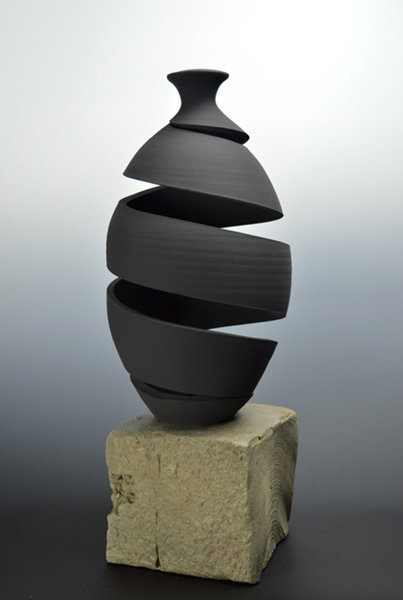Michael Boroniec defies convention – and physics – with his altered ceramic vessels in a current solo exhibition.
The transformation of clay from a soft, malleable material into a hardened, seemingly indestructible form is one of the many elements that draw artists to the medium. From a weakened state out of the earth, artworks in clay go through an extended process of drying, its properties and capabilities evolving over time as the moisture content continues to diminish. The range of possibility with clay seems infinite, ranging from the simple traditional forms of pottery, to complex and conceptual sculptures. Finding himself somewhere in the middle is artist Michael Boroniec, who bridges the gap between pottery and sculpture, functional and not.
Without cutting into his work, Boroniec’s vases could be magnetically beautiful in their elegant simplicity and traditional fullness. However, the artist defies this tradition by altering the vessel, cutting a large gap into the work in a spiral from bottom to top. The resulting effect gives the pot a ribbon appearance and echoes its construction on the potter’s wheel. Even those with experienced knowledge of the ceramic process are left confused as to how Boroniec achieves his effect, considering the sagging and warping often experienced during even the lowest of firing temperatures.
Regardless, the works undoubtedly illustrate both Boroniec’s acute aesthetic as well as his extremely high level of technical expertise. “BerkshireNow: Michael Boroniec” opened on September 4 at the Berkshire Museum in Pittsfield, Massachusetts and will be on view through November 22.
To learn more, visit the Berkshire Museum.
This article was featured in Fine Art Today, a weekly e-newsletter from Fine Art Connoisseur magazine. To start receiving Fine Art Today for free, click here.
Twisted Solidity








